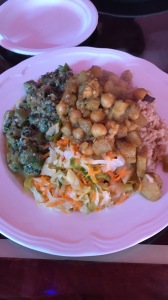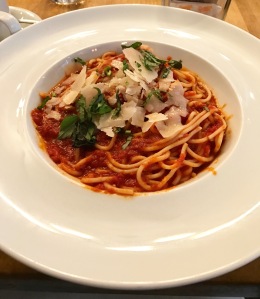In the middle of some life transitions, I have moved life for the moment to the gorgeous, inspiring and diverse New York neighbourhood of Harlem. A former Dutch settlement, and now a largely African-American neighbourhood, Harlem is a fantastic mix of cultures, languages, and cuisines.
Naturally, this has brought on incredible culinary inspiration (and not just because a Whole Foods opened up a few blocks away!). I want to share some experiments with you, and some exploring I’ve gotten up to for food in this area.
Exploring Harlem’s iconic (and gentrified) institutions
I had the chance to grab lunch at a historic Carribean restaurant here, by the name of the Sister’s. Try the scrumptious Okra cooked in coconut cream (Callaloo) or the curried chickpeas. The rice was well seasoned too.
I also had the chance to sample the brunch at Lido’s, an Italian restaurant on the very hip Frederik Douglass Boulevard. Brunch is very popular here (perhaps the bottomless Mimosas?). The food was quite good, but nothing special.


Experimenting with ingredients from local cultures
As a predominantly African-American and Spanish neighbourhood, the variety and kind of ingredients available at the corner Deli or grocery store are fantastic. From fresh fennel, plantains, yuca, taro, African spices, or Spanish style meats, there is a lot to choose from and play around with.
The image below is from a recent experiment. I found a massive bulb of fresh fennel (oh the scent! It’s intoxicating!), and as a long fan of Taro from my stint in East Africa, I decided to put them together with some spices (the Indian in me!). I included Taro, Plantains, Tomatoes, Limes, Shishito Peppers, Red Onions, Jalapenos, Ginger, Garlic, Cumin, Salt, Pepper, and Hungarian Paprika.
P.S. – Charred limes, WHO KNEW could be SO tasty. Hint: Cocktail idea..
More to come from this beautiful neighbourhood!

